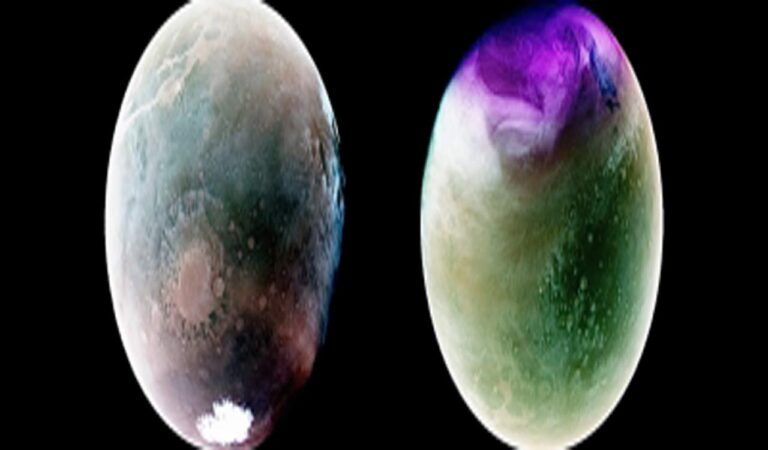NASA’s MAVEN mission captures stunning views of Mars in two ultraviolet images taken at different points in the red planet’s orbit around the sun
Post Date – Friday 23rd – 10:15pm – June 23rd

Washington: NASA’s MAVEN (Mars Atmosphere and Volatile Evolution) mission captured stunning views of Mars in two ultraviolet images taken at different points in the red planet’s orbit around the sun.
By observing Mars in ultraviolet wavelengths, scientists can gain insight into the Martian atmosphere and observe surface features in extraordinary ways.
The images were taken with the MAVEN Imaging Ultraviolet Spectrometer (IUVS) instrument in 2022 and 2023, when the planet was near the ends of the elliptical orbit.
The IUVS instrument measures wavelengths outside the visible spectrum between 110 and 340 nanometers.
To make these wavelengths visible to the human eye and easier to interpret, the images are rendered in false color, with different brightness levels for the three UV wavelength ranges represented as red, green and blue.
In this color scheme, atmospheric ozone appears purple, while clouds and mist appear white or blue.
The finish may be tan or green, depending on how the image has been optimized to increase contrast and show detail.
The first photo was taken in July 2022, during the southern hemisphere summer, when Mars is closest to the sun.
Summertime is caused by the tilt of the Earth’s axis of rotation, similar to seasons on Earth.
Argyle Basin, one of the deepest craters on Mars, appears in the image filled with atmospheric haze, while deep canyons in Valles Marineris appear in clouds.
Also clearly visible is the Antarctic ice sheet, which is shrinking due to relatively warm summers.
The second image, of Mars’ northern hemisphere, was taken in January 2023, when Mars passed its farthest point in its orbit from the Sun.
The rapid change of seasons in the Arctic has resulted in large numbers of white clouds.
This image shows the deep canyon of Valles Marineris with its many craters.
MAVEN was launched in November 2013 and entered Mars orbit in September 2014.
The mission’s goal is to explore Mars’ upper atmosphere, ionosphere, and interaction with the sun and solar wind to explore the loss of the Martian atmosphere into space.
Understanding atmospheric loss allows scientists to gain insight into the history of the Martian atmosphere and climate, liquid water, and planetary habitability.
